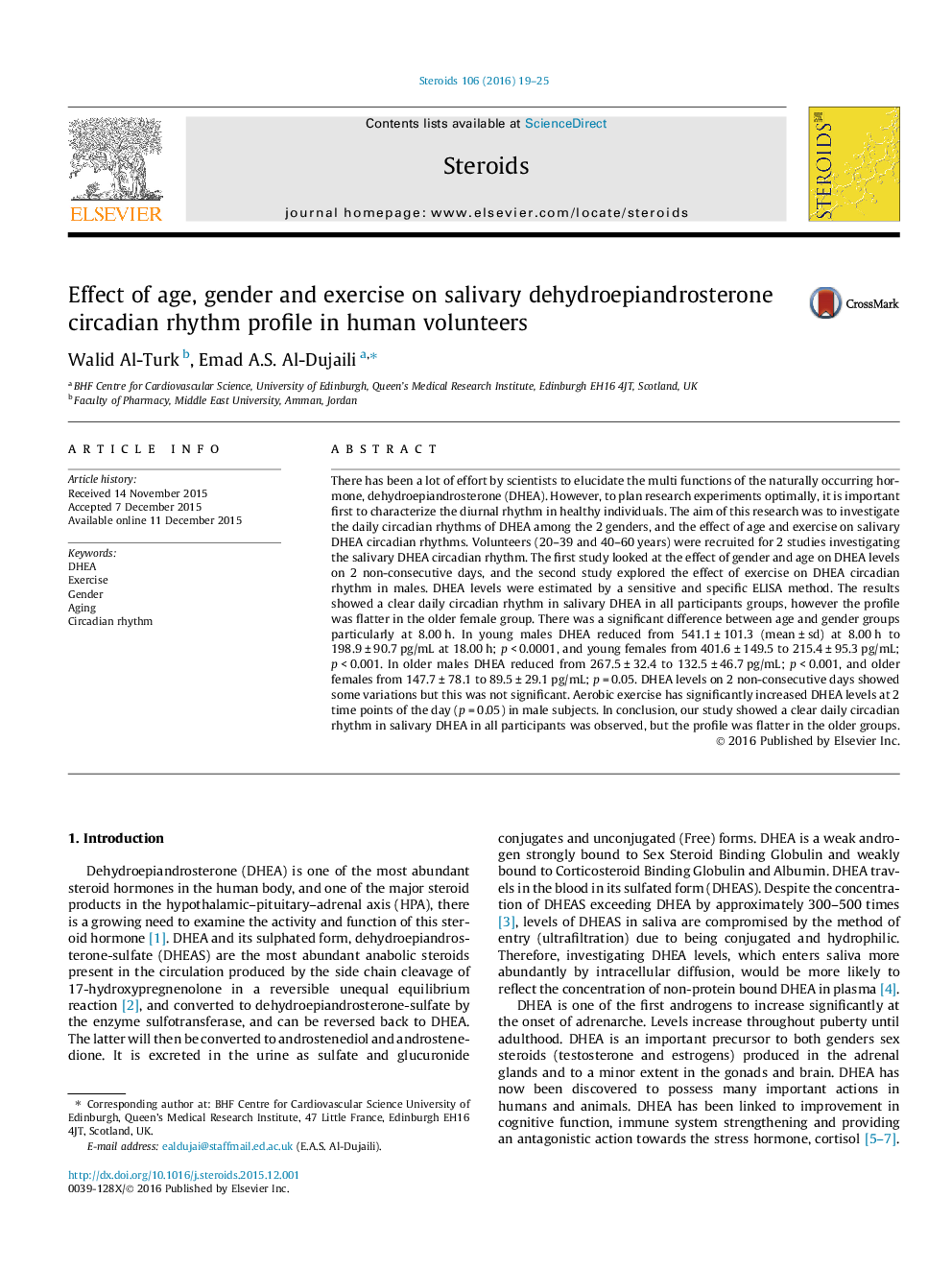| کد مقاله | کد نشریه | سال انتشار | مقاله انگلیسی | نسخه تمام متن |
|---|---|---|---|---|
| 2027508 | 1542702 | 2016 | 7 صفحه PDF | دانلود رایگان |
• DHEA and DHEAS are the most abundant steroids present in the circulation produced in the HPA axis of multi-functions.
• DHEA circadian rhythm in healthy volunteers was investigated, and studied for the effect of age and exercise.
• A clear daily circadian rhythm in salivary DHEA in all participants groups was observed 8.00 h and 18.00 h.
• 40 min aerobic exercise has been found to increase salivary DHEA levels in males.
There has been a lot of effort by scientists to elucidate the multi functions of the naturally occurring hormone, dehydroepiandrosterone (DHEA). However, to plan research experiments optimally, it is important first to characterize the diurnal rhythm in healthy individuals. The aim of this research was to investigate the daily circadian rhythms of DHEA among the 2 genders, and the effect of age and exercise on salivary DHEA circadian rhythms. Volunteers (20–39 and 40–60 years) were recruited for 2 studies investigating the salivary DHEA circadian rhythm. The first study looked at the effect of gender and age on DHEA levels on 2 non-consecutive days, and the second study explored the effect of exercise on DHEA circadian rhythm in males. DHEA levels were estimated by a sensitive and specific ELISA method. The results showed a clear daily circadian rhythm in salivary DHEA in all participants groups, however the profile was flatter in the older female group. There was a significant difference between age and gender groups particularly at 8.00 h. In young males DHEA reduced from 541.1 ± 101.3 (mean ± sd) at 8.00 h to 198.9 ± 90.7 pg/mL at 18.00 h; p < 0.0001, and young females from 401.6 ± 149.5 to 215.4 ± 95.3 pg/mL; p < 0.001. In older males DHEA reduced from 267.5 ± 32.4 to 132.5 ± 46.7 pg/mL; p < 0.001, and older females from 147.7 ± 78.1 to 89.5 ± 29.1 pg/mL; p = 0.05. DHEA levels on 2 non-consecutive days showed some variations but this was not significant. Aerobic exercise has significantly increased DHEA levels at 2 time points of the day (p = 0.05) in male subjects. In conclusion, our study showed a clear daily circadian rhythm in salivary DHEA in all participants was observed, but the profile was flatter in the older groups.
Journal: Steroids - Volume 106, February 2016, Pages 19–25
